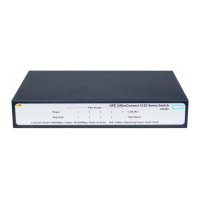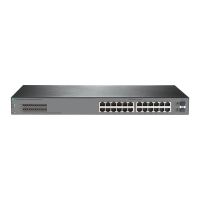22
Special IP addresses
The following IP addresses are for special use and cannot be used as host IP addresses:
• IP address with an all-zero net ID—Identifies a host on the local network. For example, IP
address 0.0.0.16 indicates the host with a host ID of 16 on the local network.
• IP address with an all-zero host ID—Identifies a network.
• IP address with an all-one host ID—Identifies a directed broadcast address. For example, a
packet with the destination address of 192.168.1.255 will be broadcast to all the hosts on the
network 192.168.1.0.
Subnetting and masking
Subnetting divides a network into smaller networks called subnets by using some bits of the host ID
to create a subnet ID.
Masking identifies the boundary between the host ID and the combination of net ID and subnet ID.
Each subnet mask comprises 32 bits that correspond to the bits in an IP address. In a subnet mask,
consecutive ones represent the net ID and subnet ID, and consecutive zeros represent the host ID.
Before being subnetted, Class A, B, and C networks use these default masks (also called natural
masks): 255.0.0.0, 255.255.0.0, and 255.255.255.0, respectively.
Figure 8 Subnetting a Class B network
Subnetting increases the number of addresses that cannot be assigned to hosts. Therefore, using
subnets means accommodating fewer hosts.
For example, a Class B network without subnetting can accommodate 1022 more hosts than the
same network subnetted into 512 subnets.
• Without subnetting—65534 (2
16
– 2) hosts. (The two deducted addresses are the broadcast
address, which has an all-one host ID, and the network address, which has an all-zero host ID.)
• With subnetting—Using the first nine bits of the host-id for subnetting provides 512 (2
9
)
subnets. However, only seven bits remain available for the host ID. This allows 126 (2
7
– 2)
hosts in each subnet, a total of 64512 (512 × 126) hosts.
IP address assignment
The following are methods available for assigning an IP address to an interface:
• Manual assignment. This chapter describes only manual IP address assignment for interfaces.
• BOOTP. For information about BOOTP, see "Configuring the BOOTP client."
• DHCP
. For information about DHCP, see "Configuring the DHCP client."
These meth
ods are mutually exclusive. If you change the IP address assignment method, the new IP
address will overwrite the previous address.

